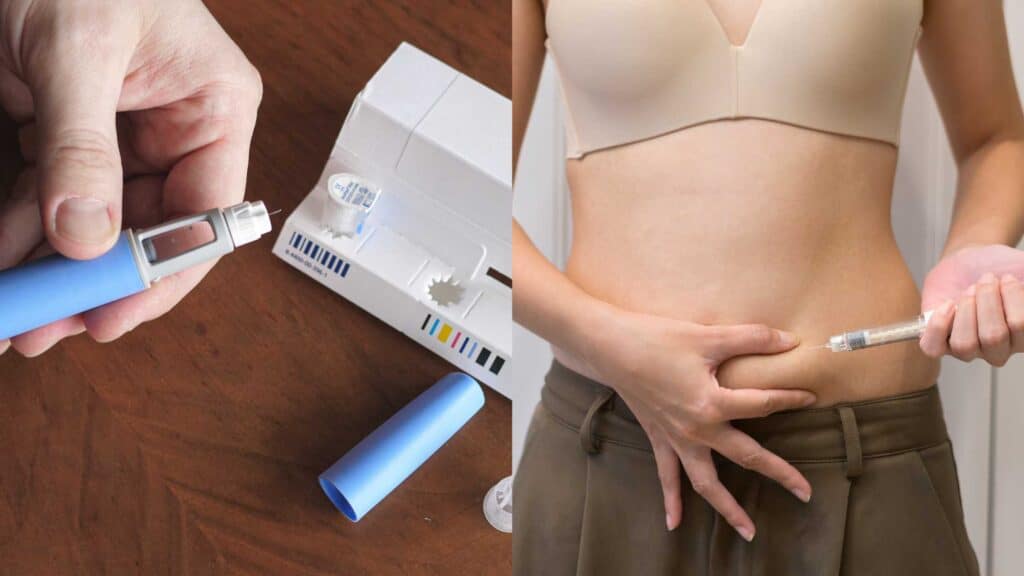Key Takeaways
- That’s not to say there is a firm age cutoff for liposuction. People in their 50s and beyond can still achieve good results when overall health, skin quality, and realistic goals are taken into account. Discuss with a skilled surgeon for a personalized evaluation.
- Successful candidacy depends on more than just age, including stable weight, localized fat deposits, good cardio and metabolic health, and realistic expectations about contouring, not weight loss.
- Skin elasticity plays a significant role in results and might necessitate adjunct procedures or skin-tightening methods when laxity is significant. Newer laser or ultrasound-assisted options may enhance outcomes for older skin.
- Recovery may be slower after 50, so prepare for extended healing. Adhere to postoperative care tips, eat healthy and exercise, and stay in touch with your surgeon for frequent follow-ups.
- Mental attitude and realistic expectations are important. See liposuction as body sculpting for stubborn fat, not a weight-loss solution, and maintain lifestyle habits to hold results.
- Collaborate with a skilled surgeon who customizes technique and combination procedures to your physique, skin laxity, and objectives to optimize safety and results.
Liposuction for over 50s still worth it. Most seniors experience consistent area-specific fat reduction and enhanced physique when they are in good health and have reasonable expectations.
Recovery can take longer and risks rise with age, so medical checks and experienced surgeons matter. Think about your general health, skin elasticity, and the lifestyle alterations necessary to maintain results.
The main body examines advantages, hazards, and feasibility.
The Age Question
Age in itself is not a barrier for liposuction. Chronological age is a digit. What counts is physiological age, health, skin condition, and being realistic. Surgeons screen each person individually, examining cardiovascular fitness, metabolic health, medications, and ability to heal.
A lot of folks in their 50s, 60s, and even 70s can get great outcomes once they clear those scans and get the surgery prepped. Older patients routinely request liposuction to address fat that diet and exercise have missed. For most 50-somethings, this is just when they can finally put themselves first, even for elective surgeries.
Patients over 60 can be safe and effective if the surgical plan is mindful of slower healing and other age-related changes. A surgeon will talk about risks, set realistic expectations, and often suggest staged procedures or combinations, such as liposuction and a small lift, to treat loosened skin.
Effects of aging on liposuction outcomes include:
- Less skin elasticity can hinder how well skin retracts after fat removal.
- Thinner subcutaneous tissue alters fat redistribution and how contouring appears.
- Resulting in slower wound healing, usually by an additional one to two weeks to return to full recovery.
- Greater medical comorbidities such as hypertension and diabetes increase surgical risk.
- Medications, in particular blood thinners, impact bleeding and recovery.
- Shifts in fat distribution patterns include more visceral fat that liposuction cannot address.
Juxtapose prime years to impact among seniors. Surgeons can be fond of younger candidates in the late teens to early twenties for durability and skin elasticity. That doesn’t mean that older adults aren’t good candidates as well.
Younger patients tend to have more resilient skin and fewer complicating health conditions, which facilitates easier recuperations. Innovations in technique, including tumescent liposuction, ultrasound-assisted liposuction, and power-assisted instruments, increase accuracy and minimize injury.
These advances assist older patients as well since less trauma and better sculpting can translate into safer surgeries and more elegant outcomes, even when skin is less supple. Practical advice for seniors should include a comprehensive medical exam, optimization of chronic conditions, smoking cessation, and realistic expectations for a longer-than-average recovery.
Examine the status of any implants, as breast implants typically remain for 10 to 15 years and might require removal or replacement. If more dramatic renewal is the goal, consider combining liposuction with other procedures, like a facelift, which can do wonders for self-esteem for those over 50.
Collaborate with a board-certified surgeon who is used to dealing with older patients and personalized perioperative care.
Candidacy Beyond Age
Your liposuction candidacy over 50 depends on much more than your age. They evaluate health, body composition, skin quality, previous surgeries, and lifestyle. Good candidates have stable weight, good skin elasticity, and no uncontrolled medical issues.
Certain healthy individuals in their 60s and 70s can qualify; a healthy 70-year-old, for example, would be a better candidate than an unhealthy 50-year-old. Recovery is slower with age, sometimes an extra week or two compared to younger patients. Daily habits should be examined pre-surgery.
1. Skin Quality
Having good skin elasticity is important because the skin needs to retract smoothly after the fat has been removed. A lack of recoil becomes sagging. Mature skin has less collagen and elastin, so older adults are at increased risk of loose skin after liposuction.
For those with significant laxity, combining liposuction with a skin-tightening treatment or surgical lift provides superior contour and fewer surprises post-healing. Skin tone and texture matter. Thin, crepey skin and extensive stretch marks reduce the chance of a tight, smooth result.
One deeper wrinkle or localized stretch marks can be handled, but generalized laxity typically requires a complementary approach.
2. Health Status
Candidates need to be in stable physical condition, without uncontrolled conditions such as serious heart disease or poorly controlled diabetes. Cardiovascular fitness and circulation influence anesthesia risk, the rate of healing of wounds, and complications.
Good BMI or weight loss pre-surgery enhances outcomes. Patients who bounce are at risk for patchy results. Keeping fit and eating well pre and post surgery accelerates recovery and sustains the result.
Surgeons frequently request medical clearance in more elderly patients and will defer or refuse surgery if the risk is high.
3. Body Mass
Optimal candidates have localized fat pockets, not obesity. Liposuction deals with subcutaneous fat and does nothing to remove fat around the organs. A steady BMI in the normal or slightly overweight range enhances both security and visual impact.
Below is a simple guideline table for planning:
- BMI < 25: Liposuction often appropriate for contouring.
- BMI 25–30: Selective candidates; combine with lifestyle changes.
- BMI greater than 30 means you should consider weight loss first. Other methods might be more secure.
Candidates in their 30s to 70s when fat is resistant and targeted.
4. Mental Outlook
Keep your expectations realistic. Liposuction shapes, it doesn’t completely tighten loose skin or cure cellulite. A lot of patients feel more confident and have a better quality of life after triumphantly undergoing procedures.
Liposuction is not a weight-loss instrument; it’s a body-sculpting alternative. The right attitude and dedication to nutrition lead to sustainable success.
Tailored Techniques
Contemporary liposuction provides several techniques that can be tailored to an older patient’s physique and objectives. Laser-assisted and ultrasound-assisted liposuction both disrupt fat prior to extraction, which can translate into easier suction and less damage to adjacent tissue. For those over 50, this typically results in softer contours and reduced bruising.
Power-assisted devices can accelerate fat extraction even more by utilizing a vibrating cannula, which decreases surgeon fatigue and increases precision when applied to fibrous or dense tissue, as seen in older patients.
Treatment plans have to be constructed around each individual’s distinct body type, skin tone, health, and goals. A comprehensive pre-op exam evaluates skin laxity, fat deposits, including visceral and subcutaneous, medical history, and medications.
For instance, a post-menopausal woman with minimal skin laxity and primarily subcutaneous deposits could do well with laser-assisted liposuction and skin-tightening energy treatment. A patient with high visceral fat requires metabolic evaluation and a broader health strategy, as liposuction reduces subcutaneous fat and minimally impacts the internal fat threat.
In many cases, combining procedures are the best way to address both fat and excess skin. A tummy tuck combined with liposuction eliminates excess skin while sculpting hidden fat. A lower facelift with liposuction of the chin can ensure a tight neck and jawline in a single operation.
These fused strategies necessitate additional planning and can alter anesthesia selection, surgical duration, and postoperative recovery prognosis for which open discussion about risks and staged alternatives is crucial.
Surgeon experience is central to safe, predictable outcomes. An experienced surgeon customizes technique selection, anesthesia type, tumescent fluid formula, and post-op regimen to the patient’s age and needs. The use of local tumescent anesthesia instead of general anesthesia can lower systemic risk and speed recovery for suitable candidates.
Medication and supplement adjustments before surgery, such as stopping blood thinners, reviewing herbal supplements, and optimizing nutrition, reduce bleeding risk and support healing.
Rest and recovery assistance need to be incorporated into the strategy. Tools like Ballancer Pro or Venus Legacy will help with swelling, lymphatic flow and skin tightening post care. Recovery times are individualized with most patients making a return to desk work within a few days and full activity at about four to six weeks, depending on treatment.
Specific pre-op and post-op instructions and realistic goals lead to better satisfaction and safer outcomes.
Realistic Outcomes
Liposuction can reshape for over-50s, but it doesn’t reverse loose skin of age. Eliminating fat from the stomach, hips, thighs or buttocks can define contours and help clothes hang better. Most women over 50 have fat pockets that cannot be diminished with diet or exercise. Liposuction usually eliminates those bulges.
Think slimmer curves, not dramatic body rewrites. Skin laxity can restrict how smooth or tight the outcome appears since collagen decreases with age by around 30% at 50 years old. Sagging skin usually persists.
Complete skin tightening doesn’t typically occur after liposuction by itself. If there is loose skin or cellulite, then more work might be required. Skin excision, energy-based skin tightening, or staged procedures to address sag are some of the options.
For instance, a patient with a big lower-abdomen fold might experience nice fat removal but still require an abdominoplasty for loose skin. Another person with mild laxity could get decent tightening from the post-liposuction shrinkage aided by radiofrequency treatments. Discussing joint plans ahead of time establishes feasible expectations.
Recovery is slower and more variable with age. Expect a longer healing timeline than younger patients. People over 60 typically need an extra week or two for full recovery, and tissue pliability usually returns within about three months.
Certain feelings, like numbness or changed sensation, can require a year or more to resolve. Mobility and pre-existing health problems influence healing. Good cardiovascular fitness and controlled chronic conditions accelerate recovery more than age by itself.
Results to maintain lifestyle steps. Being within roughly 10% of ideal weight keeps the new contours standing the test of time. If you gain a substantial amount of weight, fat can come back to treated and untreated areas.
Practical examples: a 55-year-old who loses targeted fat and keeps a stable weight often keeps the look for years. A 52-year-old who puts on 8 to 10 kilograms post-surgery will probably lose the advantage.
Support counts in recovery. Getting assistance with day-to-day activities decreases stress and complication risk. Even basic assistance with grocery runs, childcare, or dressing can free patients to relax and comply with post-op directives.
Your suitability really depends on your health and fitness rather than your age. A healthy 68-year-old with great labs and very fit may outperform a sedentary 52-year-old with uncontrolled comorbidities.
The Recovery Journey
Recovery after liposuction is a gradual progression beginning with swelling and mild pain that tapers off over weeks into more defined results. For those over 50, this timeline tends to be a little extended as tissues tend to heal more slowly and skin is less elastic. Anticipate the initial days to be the sorest and bruised.
Almost everyone can return to light activity in one to two weeks, but older adults often require another one to two weeks before they feel completely comfortable with a normal regimen. Complete tissue pliability typically resumes by around three months.
Begin with some practical advice for healing. Try to move as much as you can, little by little, each day to help prevent stiffness and blood clots. Walking even short distances a few times a day is helpful.
Listen to the surgeon’s guidance on compression garments. They assist with swelling and contour the area as tissues settle. Consume a high protein, vitamin, and fluid-rich diet to aid in tissue repair. Quit smoking weeks before surgery and do not smoke during recovery either. Quitting boosts your circulation and reduces the risk of complications.
Common side effects and complications checklist:
- Swelling is expected and can be pronounced in the first two to four weeks. It then softens after week four with steady improvement over six to eight weeks.
- Pain and soreness are most apparent in the initial days and are typically managed with prescription or OTC pain medications.
- Bruising is normal and can last a few weeks. Color changes show the movement toward recovery.
- Numbness or altered sensation is often temporary and may take weeks to months to resolve.
- Infection: Less common with proper care. Watch for fever, increasing redness, or discharge.
- Irregular contours or asymmetry can occur if tissues do not retract evenly. It could stand to be revised in certain instances.
- Fluid collections (seroma): Small pockets may form and sometimes need drainage.
- Delayed wound healing is more likely in older patients or smokers and needs close monitoring.
Personalized care and follow-up count more as we grow older. Surgeons ought to establish reasonable timelines and check for slow-healing indicators during scheduled visits. Continuous follow-up visits allow clinicians to measure swelling, observe skin retraction, and determine when massage, lymphatic drainage or supportive therapies should be initiated.
Customize pain management, activity schedules, and bra usage to your own recovery, not the calendar. If you have chronic issues such as diabetes or vascular disease, ensure care is coordinated with your primary doctor to manage those problems before and after surgery.
A Holistic View
Liposuction for over 50 is best considered in the context of a holistic plan incorporating health, skin care, and practical expectations. Age alters the body in ways relevant to surgical outcomes. Collagen output drops 30% or more beginning at age 50, so skin is less bouncy, which impacts the body’s contour after liposuction.
Planning should start with a clear view of weight, skin tone, medical history, and the patient’s lifestyle. Mix liposuction with habits for enduring change. Stay at a healthy weight, preferably within 10 percent of that goal weight, for results to hold.
Consistent, joint-friendly exercise and a protein-rich balanced diet encourage tissue repair and muscle tone. No smoking a few weeks prior to surgery. Cessation reduces the risk of wound complications and enhances circulation that accelerates healing.
If you’re a patient with mobility restrictions or comorbidities, collaborate with your PCP and surgeon to customize prehab and rehab protocols. Realistic timelines and age healing differences are also important to consider. Procedures can take up to a few hours depending on treatment areas, and patients enter a recovery room for post-operative monitoring.
Results can be apparent quickly, but final shaping typically occurs between three and six months. Patients older than sixty potentially require an additional one to two weeks for full recovery as opposed to their younger counterparts. Swelling and bruising take their usual courses, but can persist a little longer when skin quality is diminished.
Tackle myths head-on. There’s not necessarily an upper age cut off which makes liposuction impossible and many senior citizens can be great candidates. Liposuction extracts fat, not loose skin. It won’t completely fix sag from low collagen.
To a few, they anticipate immediate, shocking transformation, but true results emerge slowly as swelling subsides and skin settles. A customized approach, such as less-volume extraction, targeted zones, or coupling liposuction with skin-tightening surgeries, delivers safer and more satisfying results for older frames.
Think mentally and pragmatically, not just physically. Emotional readiness, having support at home for those first days, and setting realistic expectations minimize disappointment. Discuss multiple options with the surgeon: conservative fat removal, staged procedures, or adjunct treatments like laser skin tightening.
With careful planning, matched technique, and realistic goals, liposuction can be a worthwhile option for people over 50.
Conclusion
Liposuction for the over 50 crowd. It removes fat in focused areas, makes clothes fit better, and can increase self-confidence. Health and skin tone determine the outcome. Good heart health, stable weight, and realistic expectations matter more than age. Surgeons now apply gentler instruments and smaller incisions. Recovery takes weeks, not months, and a consistent regimen of motion and attention accelerates healing. Pair it with diet and muscle work for permanent transformation. Many 50-somethings experience genuine improvements in comfort and confidence from just one treatment. Consult with a board-certified surgeon, look at before and after photos, and consider risks and expenses. Want to hear more? Schedule a consultation or opinion.
Frequently Asked Questions
Is liposuction safe for people over 50?
Liposuction can be safe for a lot of individuals over the age of 50. Safety depends more on your overall health, your medical history, and your surgeon’s experience. A comprehensive preoperative evaluation and selecting a board-certified plastic surgeon minimize risks.
How does age affect candidacy for liposuction?
Age itself is not a contraindication. Strong candidates have stable weight, realistic goals, and managed medical conditions. Skin quality and circulation are examined to determine the likely results.
Will my skin tighten after liposuction at 50+?
Skin elasticity decreases as we get older. Some tightening can occur, but results are mixed. Patients with significant sagging may require combined procedures such as a lift for optimal contouring.
How long is recovery for someone over 50?
Recovery times differ, typically a few weeks for normal activities and additional weeks for complete healing. Older patients may need a bit more time. Observe post-op care and activity limitations to hasten healing.
Are results from liposuction long-lasting in older adults?
Results are typically permanent if you keep your weight stable and live a healthy lifestyle. Lipids will reappear in any untreated regions if you regain weight, so long-term habits are important.
What are common risks specifically for older patients?
Older patients might be at increased risk of bruising, slower healing, and complications from chronic conditions. Preoperative medical optimization and experienced surgical teams reduce those risks.
How do I choose the right surgeon if I’m over 50?
Choose a board-certified plastic surgeon experienced in dealing with older patients. Query complication rates, before and after photos, and how they deal with age-related concerns. Choose a surgeon who discusses risks openly.







